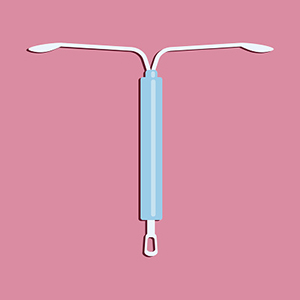Patients who used copper intrauterine devices (IUDs) were found to have a lower risk of high-grade cervical neoplasms vs users of the levonorgestrel-releasing intrauterine system, according to a study published by Spotnitz et al in the journal Obstetrics & Gynecology.
The study notes that more than 100 million women use IUDs as contraception around the world, and these findings have implications for the larger population of current IUD users.

Photo credit: Getty
Studies from the 1980s suggested reduced risk of cervical cancer among women who used an intrauterine contraceptive, though those studies did not differentiate between the varying types of IUDs. Furthermore, much of the data from those studies was collected prior to the availability of most hormonal IUDs.
Methods
By standardizing 4 decades' worth of data from the Columbia University Irving Medical Center database through the OMOP Common Data Model and using high-level analytics developed within the Observational Health Data Sciences and Informatics collaboration (OHDSI), the research team ran a retrospective cohort analysis of 10,674 patients who received IUDs at Columbia University Medical Center.
The copper IUD cohort was made up of 8,274 patients, and the levonorgestrel-releasing intrauterine system cohort was made up of 2,400. The median age for both cohorts at IUD placement was 29.
Results
Before propensity score adjustment, there were a total of 114 cervical neoplasms detected across all cohorts—0.9% in the copper IUD group and 1.5% in the levonorgestrel-releasing intrauterine system cohort.
The diagnosis of high-grade cervical neoplasia was 0.7% in the copper IUD cohort and 1.8% in the levonorgestrel-releasing intrauterine system cohort (2.4 [95% confidence interval = 1.5–4.0] cases/1,000 person-years and 5.2 [95% confidence interval = 3.7–7.1] cases/1,000 person-years, respectively).
The relative risk of high-grade cervical neoplasms among those with a copper IUD was 0.38 vs those with a levonorgestrel-releasing intrauterine system.
"Copper and hormonal IUDs may have different physiological effects on the female genitourinary system," said lead study author Matthew Spotnitz, MD, MPH, a postdoctoral research scientist within the Department of Biomedical Informatics at Columbia. "Consequently, the risk of cervical neoplasms may be different for copper and hormonal IUD users. Our findings may help patients and health-care providers make informed decisions about whether the benefits of hormonal IUD use, compared to copper IUD use, are greater than the risks."
Dr. Spotnitz noted that the research team hopes to lead a network study across other databases within the OHDSI network, which spans 19 countries, 133 unique databases converted to the OMOP CDM, and more than 1 billion patient records.
"The proportions of women who use copper and hormonal IUDs may vary among institutions," said Dr. Spotnitz. "Overall, IUD use has become more popular over the past 20 years. Copper IUD use has remained constant, whereas hormonal IUD use has increased. The rising popularity of hormonal IUDs may be related to the fact that they decrease the pain and bleeding of menses."
The authors concluded their report with, “Copper IUD users have a lower risk of high-grade cervical neoplasms compared with levonorgestrel-releasing intrauterine system users. The relative risk of cervical neoplasms of levonorgestrel-releasing intrauterine system users compared with the general population is unknown.”
Disclosure: For full disclosures of the study authors, visit journals.lww.com/greenjournal.

